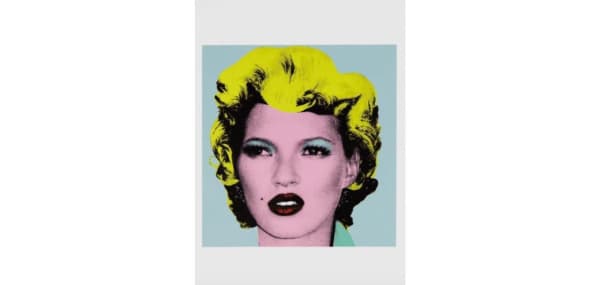
Banksy
70 x 70 cm
Banksy's Kate Moss series, particularly the green print, serves as a powerful commentary on contemporary culture, encapsulating the dynamics of fame, art commodification, and the interplay between iconography and identity. This series, which was released in 2005, involves several prints that reimagine British supermodel Kate Moss in the style of Andy Warhol’s 1960s portraits of Marilyn Monroe. By choosing to adapt Warhol's style, Banksy not only nods to a pivotal moment in art history but also delves into the mechanisms of celebrity status in the modern era.
Warhol's work with Marilyn Monroe often discussed the way celebrities are both revered and consumed by the public, a theme that Banksy revitalizes with his depiction of Kate Moss. The use of vibrant, even garish, colors in these prints exaggerates the artificiality often inherent in the public's perception of celebrities. The green print in particular, with its use of a color that can symbolize jealousy, vitality, and money, layers additional meanings into the image. Green's association with money can be seen as a direct nod to the commercialization not only of Kate Moss's image but also of art and celebrity in general. This hue invokes the envy that can be inspired by celebrity and the greed that often surrounds the profiting industries built around such figures.
The series also highlights the paradox of the celebrity as both a public commodity and a private individual. By replicating Moss's image in the manner that Warhol replicated Monroe's, Banksy emphasizes the mass production of celebrity images, suggesting that celebrities become mere products in the eyes of the public and media. This replication points to a depersonalization, where the individuality of the person is lost to their constructed media image.
Moreover, Banksy’s choice of Kate Moss as a subject is particularly poignant. As a figure who has had her persona widely circulated and consumed, Moss embodies the complexities of celebrity culture. Her publicized personal struggles and media scrutiny reflect the intense pressures and invasions of privacy that celebrities endure. In Banksy’s hands, her image becomes a vehicle for critiquing the very culture that idolizes and then commodifies human beings.
In a broader context, the Kate Moss series can be seen as part of Banksy's larger body of work, which often critiques social and political issues through a subversive use of street art. By blending high art with elements of street culture and by incorporating ironic and poignant social commentary, Banksy's work invites the viewer to question established norms and values, particularly around issues of fame, art, and commerce.
Thus, Banksy’s green print of Kate Moss is much more than a mere artistic tribute or a decorative piece; it is a rich, multifaceted commentary on the mechanisms of modern celebrity culture, echoing the enduring concerns of identity and authenticity in an age dominated by images and capitalism.
Join our mailing list
* denotes required fields
We will process the personal data you have supplied in accordance with our privacy policy (available on request). You can unsubscribe or change your preferences at any time by clicking the link in our emails.
This website uses cookies
This site uses cookies to help make it more useful to you. Find out more about cookies.








